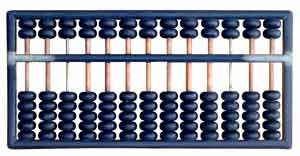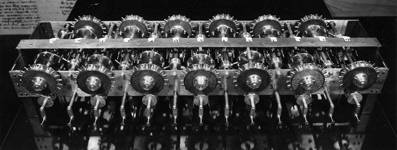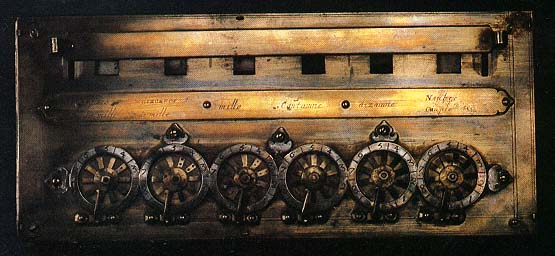
PEBBLES
A Brief History of Computers
Ancient Times to 1800
The first aids to calculation were fingers. They were used to add, subtract, and to store memory. A caveman might have used three fingers to describe the three deer that got away on his hunting trip. The word digit is derived from the Latin word digitus, which means finger or toe.
As life became more complicated, shepherds counted their sheep by carving notches in sticks or tying knots in their belts. Pebbles were also used to compute. The word calculate is derived from the Latin word calculus, which means stone or pebble.

Merchants devised the calculator sandbox, which contained grooves representing place value, to record their transactions. The Phoenicians called their box the abak and the Romans, the abacus.

By 400 B.C. the abacus was a popular tool for calculating in the Far East. The Russians, Chinese, and Japanese adapted different versions of beads strung on a wire frame in columns representing place value. Paper replaced the abacus in Europe about six hundred years ago. The abacus is still used in Asia.

VERSIONS OF THE ABACUS

THE ABACUS
The Arabic number system, which originated with the Hindus in India about two thousand years ago, replaced the Roman numeral system. Calculating was much easier using the digits 0 to 9 and the decimal columns.
During the fifteenth and sixteenth centuries,
wheels and gears were used in music boxes and clocks. Leonardo da
Vinci, an Italian artist, designed a machine that could calculate mechanically,
it was never built.



THE "CODEX MADRID"
In the 1640s Blaise Pascal, who was nineteen years old, invented the first mechanical calculating machine that could add and subtract. The Pascaline, which was based on the decimal number system, was so popular that he sold fifty of them!

THE PASCALINE (FRONT)

THE PASCALINE (REAR)
Baron Gottfried Wilhelm von Leibniz of Germany improved the Pascaline by adding wheels and gears. This enabled it to add, subtract, multiply, and divide. He also developed the binary, or base two number system in the late 1600s. It was later used to store information in a computerís memory.

THE RECKONER